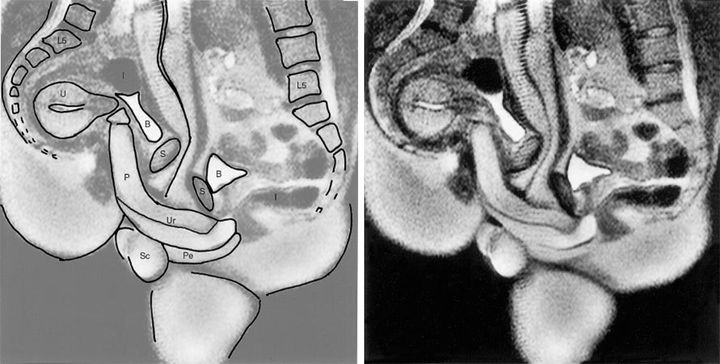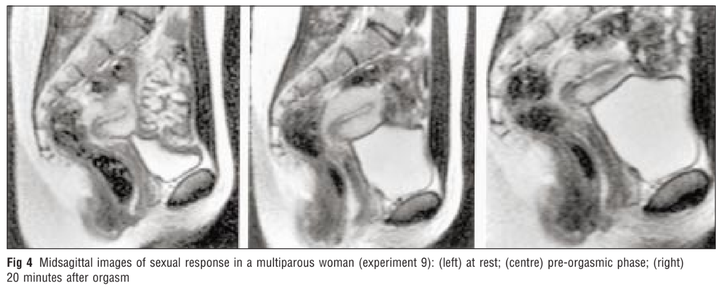
In two decades, few studies have sparked public interest in science as much as the one that took MRI scans of couples having sex. We wonder why.
The study, which celebrates its 20th birthday this Christmas, picked up the Ig Nobel Prize for medicine in its first year, but has since become one of the most downloaded British Medical Journal (BMJ) articles of all time.
Participants were required to have sex in an MRI tube, while the researchers stood in a room next door, only communicating with them over an intercom.
“The participants were asked to lie with pelvises near the marked centre of the tube and not to move during imaging,” the study, published in 1999, says.

Granted, the images are a little hard to decipher, but they are 20 years old. If you’re struggling to make out the body parts, focus on the two spines and all becomes clear.
This handy key is also illuminating: P=penis, Ur=urethra, Pe=perineum, U=uterus, S=symphysis, B=bladder, I=intestine, L5=lumbar 5, Sc=scrotum.
The main finding, based on 13 experiments with eight couples and three single women, was that during sex in the missionary position, the penis is neither straight nor ‘S’ shaped as had been previously thought, but is, in fact, the shape of a boomerang.
What’s more, during female sexual arousal, the size of the uterus does not increase, as had been previously reported. Instead, the researchers noted that “in the pre-orgasmic phase, the anterior vaginal wall lengthened by 1cm and the uterus rose within the pelvis”, but “during sexual arousal without coitus, the position and size of the uterus hardly changed”.

We have so many questions for the brave men and women who took part, but alas, the minor details remain a mystery as all participants were granted anonymity. Perhaps for the best.
To mark the anniversary of the study, Dr Tony Delamothe, a former editor at the BMJ, has penned a new article pondering its success.
At the time, nobody at the BMJ thought the study was particularly useful, clinically or scientifically, he writes, but they agreed it contained, “a striking image using a new technology,” and “readers might be interested to see it”.
In a world predating the boom of online pornography, Dr Delamothe suggests the prospect of seeing sex on screen (for free) was the attraction for many who flocked to read the study, even if all that was on offer was a series of black and white still photographs.
“If that’s the explanation, it’s hard to think ourselves back to such an innocent age, given today’s explicit online offerings,” he writes.
Some hospital staff were apparently “reluctant” to be part of the research, while participants also experienced “some problems with sexual performance”.
However, the original study notes that eventually, all parties got on board, adding: “We thank our volunteers for their cooperation, laughter, and permission to publish intimate MR images of them [and] those hospital officials on duty who had the intellectual courage to allow us to continue this search, despite obtrusive and sniffing press hounds.”
We’d also like to salute the legendary pioneers.